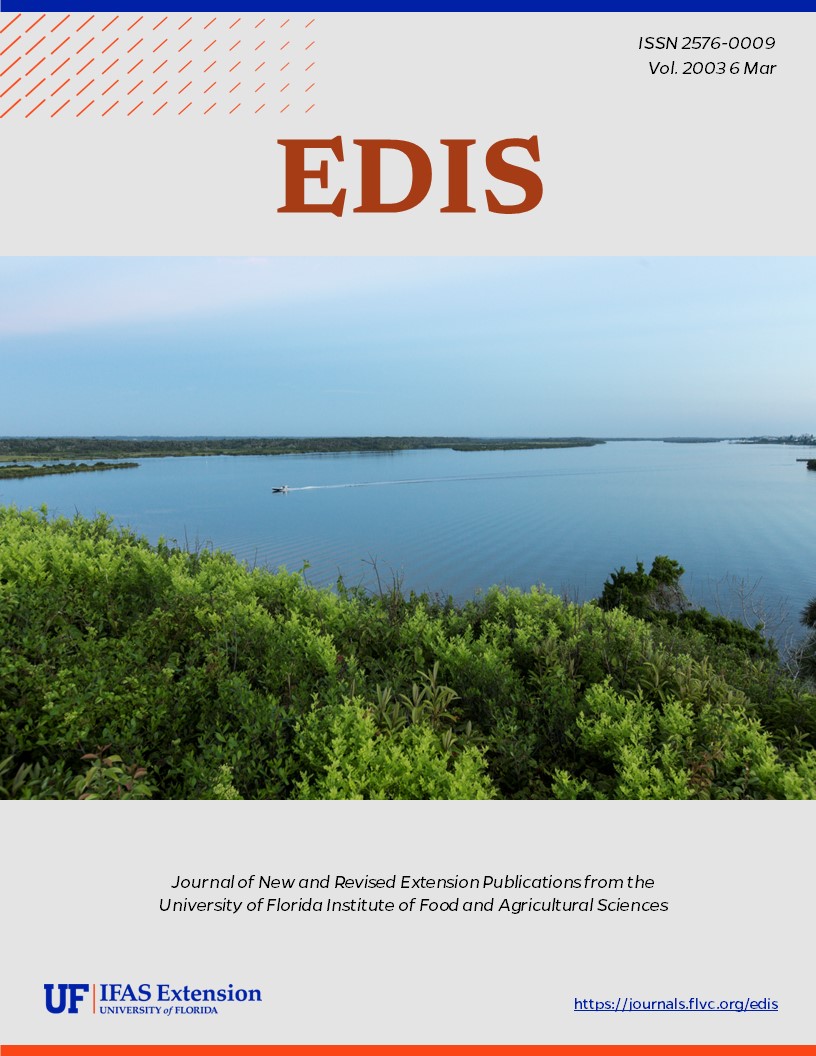Abstract
This paper presents examples of: 1) Experimental and practical fish feed blends or formulas which are nutrient balanced and adaptable to particular conditions; 2) The formulation and preparation of a semi-purified ornamental African cichlid fish diet that can be used in the laboratory or when small quantities of feed are needed; 3) The preparation of a gelatin-based diet that is often used to administer medicines or other chemicals. Background information on nutrition, feedstuffs and feed formulations are presented with emphasis primarily on the feeding of ornamental “aquarium” fishes. First published Feburary 2003.
Cir 97/FA097: Preparing Your Own Fish Feeds (ufl.edu)
References
Boonyaratpalin, M. and R. T. Lovell. 1977. Diet preparation for aquarium fishes. Aquaculture 12: 53-62. https://doi.org/10.1016/0044-8486(77)90046-1
DeKoven, D. L., J. M. Nunez, S. M. Lester, D. E. Conklin, G. D. Marty, L. M. Parker and D. E. Hinton. 1992. A purified diet for Medaka (Oryzias latipes): refining a fish model for toxicological research. Laboratory Animal Science 42: 180-189.
De Silva, S. S. and T. A. Anderson. 1995. Fish Nutrition in Aquaculture. Chapman and Hall. London, UK.
Francis-Floyd, R. and P. Reed. 1994. Management of Hexamita in Ornamental Cichlids. UF/IFAS Fact Sheet VM 67. University of Florida, USA.
Goddard, S. 1996. Feed Management in Intensive Aquaculture. Chapman and Hall. New York, USA. https://doi.org/10.1007/978-1-4613-1173-7
Halver, J. E. (ed). 1989. Fish Nutrition. 2nd Ed. Academic Press Inc. San Diego, USA.
Hardy R. W. and F. T. Barrows. 2002. Diet formulation and manufacture. Pp. 505-600. In: Fish Nutrition. 3rd Ed. Elsevier Science. New York, USA. https://doi.org/10.1016/B978-012319652-1/50010-0
Hertrampf, J. W. and F. Piedad-Pascual. 2000. Handbook on Ingredients for Aquaculture Feeds. Kluwer Academic Publishers. Dordrecht, The Netherlands. https://doi.org/10.1007/978-94-011-4018-8
Lectures on Training Course in Fish Feed Technology. 1980. Fish Feed Technology. Food and Agriculture Organization of the United Nations (FAO)/ADCP/REP/80/11.
Lewbart, G. A. 1998. Self-assessment Color Review of Ornamental Fish. Iowa State University Press. Ames, USA.
Lewbart, G. A. 1991. Medical management of disorder of freshwater tropical fish. Compendium on Continuing Education for the Practicing Veterinarian 13: 969-978.
Lovell, T. 1989. Nutrition and Feeding of Fish. Van Nostrand Reinhold Publishers. New York, USA. https://doi.org/10.1007/978-1-4757-1174-5
Meyers, S. P. and C. W. Brand. 1975. Experimental flake diets for fish and crustacea. The Progressive Fish-Culturist 37(2): 67-72. https://doi.org/10.1577/1548-8659(1975)37[67:EFDFFA]2.0.CO;2
National Research Council. 1993. Nutrient Requirements of Fish. National Academy Press. Washington DC, USA.
New, M. B. 1987. Feed and Feeding of Fish and Shrimp: A Manual on the Preparation and Presentation of Compound Feeds for Shrimp and Fish in Aquaculture. Food and Agriculture Organization of the United Nations (FAO)/AADCP/REP/87/26.
New, M. B., A. G .J. Tacon and I. Csavas. 1993. Farm-Made Aquafeeds. Proceedings, Regional Consultation on Farm-made Aquafeeds, 14-18 December 1992. Bangkok, Thailand. Food and Agriculture Organization of the United Nations (FAO)/AADCP/PROC/5/93/18.
Royes, J. B. Unpublished Dissertation. The Optimum Protein Level for African Cichlid Fry (Pseudotropheus socolofii). University of Florida, USA.
Spotte, S., P. E. Stake, P. M. Bubucis and J. D. Buck. 1985. Alginate and gelatin bound foods for exhibit fishes. Zoo Biology 4: 33-48. https://doi.org/10.1002/zoo.1430040105
Tacon, A. G. J. 1990. Standard Methods for the Nutrition and Feeding of Farmed Fish and Shrimp. Argent Laboratories Press. Redmond, USA.
Winfree, R. A. 1992. Nutrition and feeding of tropical fish. In: J.B. Gratzek (ed). Aquariology: Fish Anatomy, Physiology, and Nutrition. Tetra Press. Morris Plains, USA.
Yanong, R. P. E. 1999. Nutrition of ornamental fish. Veterinary Clinics of North America: Exotic Animal Practice 2(1): 19-42. https://doi.org/10.1016/S1094-9194(17)30138-X
Unless otherwise specified, articles published in the EDIS journal after January 1, 2024 are licensed under a Creative Commons Attribution-NonCommercial-NoDerivs 4.0 International (CC BY-NC-ND 4.0) license.

